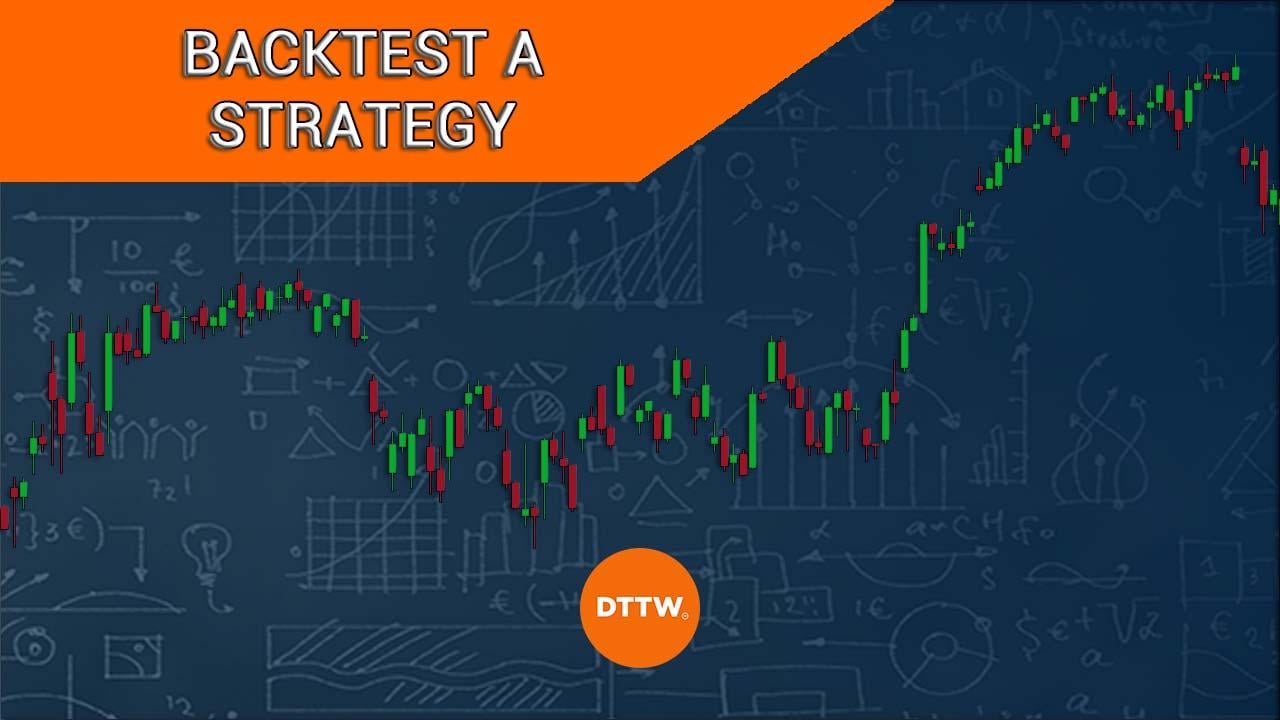In the ever-evolving world of Forex trading, the idea of a tireless, emotionless robot handling trades is tantalizing. Imagine a system that works around the clock, analyzing market trends, executing trades with precision, and never needing a coffee break. Crafting your own Forex trading robot can seem like a daunting task, but with the right approach, it becomes an achievable goal. This article will guide you through the key steps in creating a Forex trading robot, transforming complex algorithms and technical jargon into a streamlined process. Whether you’re a seasoned trader looking to automate your strategy or a tech enthusiast eager to dive into financial markets, this guide will help you navigate the essentials of building a Forex trading robot.
Creating a Forex Trading Robot: A Beginners Guide
When you’re diving into the world of Forex trading robots, the first step is to equip yourself with the right tools and knowledge. Start by selecting a reliable trading platform like MetaTrader 4 or MetaTrader 5. These platforms are widely used and support automated trading, making them ideal for deploying your robot. Next, choose a currency pair to focus on. For beginners, GBP/USD is a popular choice due to its liquidity and stable trends. Ensure that your trading account is set up with a broker that offers low spreads and high leverage options, such as 1:500, to maximize your trading potential.
Once your platform and account are ready, it’s time to configure your robot. Most robots, like the XC Pips EA, come with default settings that are optimized for general use. However, you can fine-tune parameters such as lot size, take profit, stop loss, and trading hours to match your risk tolerance and trading goals. For instance, starting with a conservative lot size of 0.01 and gradually increasing it as your capital grows is a prudent strategy. Also, consider incorporating features like trailing stop and automated protection against market fluctuations to safeguard your investments. Remember, the key to successful automated trading is continuous monitoring and periodic adjustments based on market conditions.

Selecting the Right Algorithm: Comparing Technical Indicators and AI-Driven Strategies
When deciding between technical indicators and AI-driven strategies, understanding their core functionalities and benefits is crucial. Technical indicators, such as moving averages, RSI, and MACD, are time-tested tools that analyze historical price data to predict future movements. These indicators are straightforward, providing clear signals based on mathematical formulas. For example, a golden cross in moving averages suggests a bullish trend, while the RSI can indicate overbought or oversold conditions. This simplicity makes technical indicators accessible to traders of all experience levels, ensuring that key market signals are easy to interpret and act upon.
On the other hand, AI-driven strategies leverage machine learning algorithms and neural networks to analyze vast amounts of data, including price movements, economic indicators, and even news sentiment. These systems, like the AI Nodiurnal EA, continuously learn and adapt to changing market conditions, refining their strategies for optimized performance. AI algorithms, such as those using Long Short-Term Memory (LSTM) networks, excel in recognizing complex patterns and making predictions based on both short-term and long-term historical data. This dynamic adaptability and the ability to process large datasets in real-time provide AI-driven strategies with a significant edge in volatile markets, where traditional technical indicators might fall short.
Optimizing Trade Execution: Best Practices for Minimizing Slippage
To minimize slippage, one must first understand the importance of liquidity absorption. Advanced algorithms specifically designed to evaluate liquidity absorption can significantly optimize trade execution. By carefully analyzing the liquidity of the trading pair, traders can identify the best moments to enter and exit trades, ensuring that orders are filled at the desired prices. This approach is not only about timing but also about understanding the market depth and the dynamics of supply and demand, which are crucial for reducing slippage.
Another effective strategy involves the use of sophisticated trailing stop mechanisms. Trailing stops are activated when the price exceeds a certain threshold, and they adjust dynamically as the market moves in favor of the trade. This ensures that profits are locked in while minimizing the risk of adverse price movements. Additionally, implementing maximum slippage parameters can prevent trades from being executed at unfavorable prices during periods of high volatility. By setting these parameters, traders can ensure that their orders are only filled within an acceptable range, thereby enhancing the overall quality of trade execution.
Risk Management Techniques: Fixed Stop Loss vs. Trailing Stop
Fixed stop loss orders are like the stalwart guardians of your trading capital, standing firm at a predetermined price level to prevent catastrophic losses. This method is straightforward: you set a specific price at which you will exit the trade if the market moves against you. For instance, if you enter a long position at 1.2050 with a fixed stop loss at 1.1980, your trade will close automatically if the price hits 1.1980, limiting your loss to a manageable level. This technique is particularly useful in volatile markets where sudden price swings can quickly erode your trading capital. However, the rigidity of fixed stop losses can sometimes be a drawback, as they do not adjust to favorable market movements, potentially cutting profits short.
On the other hand, trailing stop losses offer a more dynamic approach to risk management. Unlike their fixed counterparts, trailing stops move with the market, maintaining a set distance from the current price. For example, if you set a trailing stop at 10 pips and the price moves from 1.2050 to 1.2070, the stop loss will adjust from 1.2040 to 1.2060. This method ensures that while you lock in profits as the market moves in your favor, you also protect yourself from significant losses if the market reverses. Trailing stops are excellent for capturing gains in trending markets, but they require careful calibration to avoid being triggered by minor market fluctuations. Balancing the flexibility of trailing stops with the security of fixed stops can be a nuanced aspect of a robust trading strategy.

Case Study: Evaluating the Performance of Multi-Currency Trading Bots
In the ever-evolving world of forex trading, the Eternal Engine EA MT5 stands out by offering a sophisticated algorithm capable of adapting to complex market conditions. This bot, designed for multi-currency pair trading, boasts features such as a cutting-edge strategy algorithm, automated grid trading management, and various risk management settings. It supports trading in pairs like EURUSD, GBPUSD, AUDCAD, and AUDNZD, making it versatile for traders seeking to diversify their portfolios. The bot’s lot-sizing settings, including fixed and auto lot options, allow for personalized trading strategies that adjust according to account balance, enhancing its adaptability and efficiency in different market scenarios.
Another notable example is the Mean Machine Ai, which leverages a 12-neuron Neural Network and a Genetic Learning Algorithm to provide precise and adaptive trading strategies. This bot is compatible with multiple symbols, including AUDCAD, AUDNZD, and NZDCAD, and offers a comprehensive suite of features such as a complete news filter, smart grid recovery, and volatility protection. The Mean Machine Ai’s ability to adjust to broker server times automatically and its robust risk management tools make it a reliable choice for both novice and experienced traders aiming for consistent profitability.
Backtesting and Forward Testing: Ensuring Robustness in Various Market Conditions
Backtesting involves running your trading strategy on historical data to see how it would have performed. It’s akin to a time machine, allowing you to validate your strategy against past market conditions. For instance, the Range Breakout MT4, a popular expert advisor, shows impressive results when backtested over a three-year period. The backtest results indicate a robust performance, with the EA making calculated trades based on historical price action around major support and resistance levels. This process helps in identifying potential weaknesses and strengths of the strategy, ensuring it’s fine-tuned before any real capital is at risk.
Forward testing, on the other hand, is like putting your strategy through a trial by fire in real-time market conditions. While backtesting can provide a foundation, forward testing reveals how the strategy manages the unpredictable nature of live markets. The Poltergeist EA, for example, boasts a 95% win rate from March 2021 to March 2024, achieved through live forward testing. This EA combines trend analysis, scalping techniques, and a hedging mechanism to adapt to changing market dynamics. Forward testing ensures that the strategy is not only theoretically sound but also practically viable, offering traders confidence in its real-world applicability.
Q&A
Q: What are the initial steps to create a Forex trading robot?
A: The first step in creating a Forex trading robot is to develop a robust trading strategy. This involves selecting the currency pairs you want to trade, defining your risk tolerance, and determining the technical indicators that will guide your trading decisions. Once the strategy is set, you can code the robot using a programming language like MQL4 or MQL5, which are specifically designed for the MetaTrader trading platforms.
Q: How do you test a Forex trading robot to ensure its effectiveness?
A: Testing a Forex trading robot involves running it through a series of backtests using historical market data. This helps you see how the robot would have performed in past market conditions. To do this, you can use the strategy tester in the MetaTrader platform. Select your robot, set the testing parameters such as the currency pair and timeframe, and run the test. Analyzing the results will help you identify any flaws or areas for improvement in your robot’s strategy.
Q: What are the key components of a Forex trading robot?
A: A Forex trading robot typically includes several key components: the signal generator, which identifies trading opportunities based on technical indicators; the risk management module, which controls the size of each trade and sets stop-loss and take-profit levels; and the execution module, which places and manages the trades in the market. Together, these components work to automate the trading process from start to finish.
Q: How important is risk management in a Forex trading robot?
A: Risk management is crucial in a Forex trading robot as it helps protect your trading capital from significant losses. Effective risk management strategies include setting stop-loss levels to limit potential losses, using position sizing techniques to control the amount of capital at risk in each trade, and diversifying trades across different currency pairs to spread risk. Without proper risk management, even the most advanced trading robot can quickly deplete your trading account.
Q: Can you customize a Forex trading robot to fit different trading styles?
A: Yes, a Forex trading robot can be customized to fit various trading styles, whether you are a conservative trader who prefers low-risk strategies or an aggressive trader looking for high returns. Customization options may include adjusting the risk settings, selecting different technical indicators, and modifying the trading parameters such as the timeframe and currency pairs. This flexibility allows traders to tailor the robot to their specific needs and preferences.
Q: What are some common pitfalls to avoid when creating a Forex trading robot?
A: Common pitfalls to avoid when creating a Forex trading robot include over-optimization, where the robot is too closely fitted to historical data and may not perform well in live trading; ignoring market fundamentals, which can lead to unexpected losses during major economic events; and neglecting to update the robot regularly to adapt to changing market conditions. Additionally, it’s important to thoroughly test the robot in a demo account before deploying it in live trading to ensure it operates as expected.
The Conclusion
As you embark on your journey to create a Forex trading robot, remember that the landscape of automated trading is ever-evolving. The key steps outlined above are your blueprint, but the true essence of success lies in continuous learning and adaptation. May your algorithms be sharp, your strategies sound, and your trades ever in your favor. Until next time, may the pips be with you!








